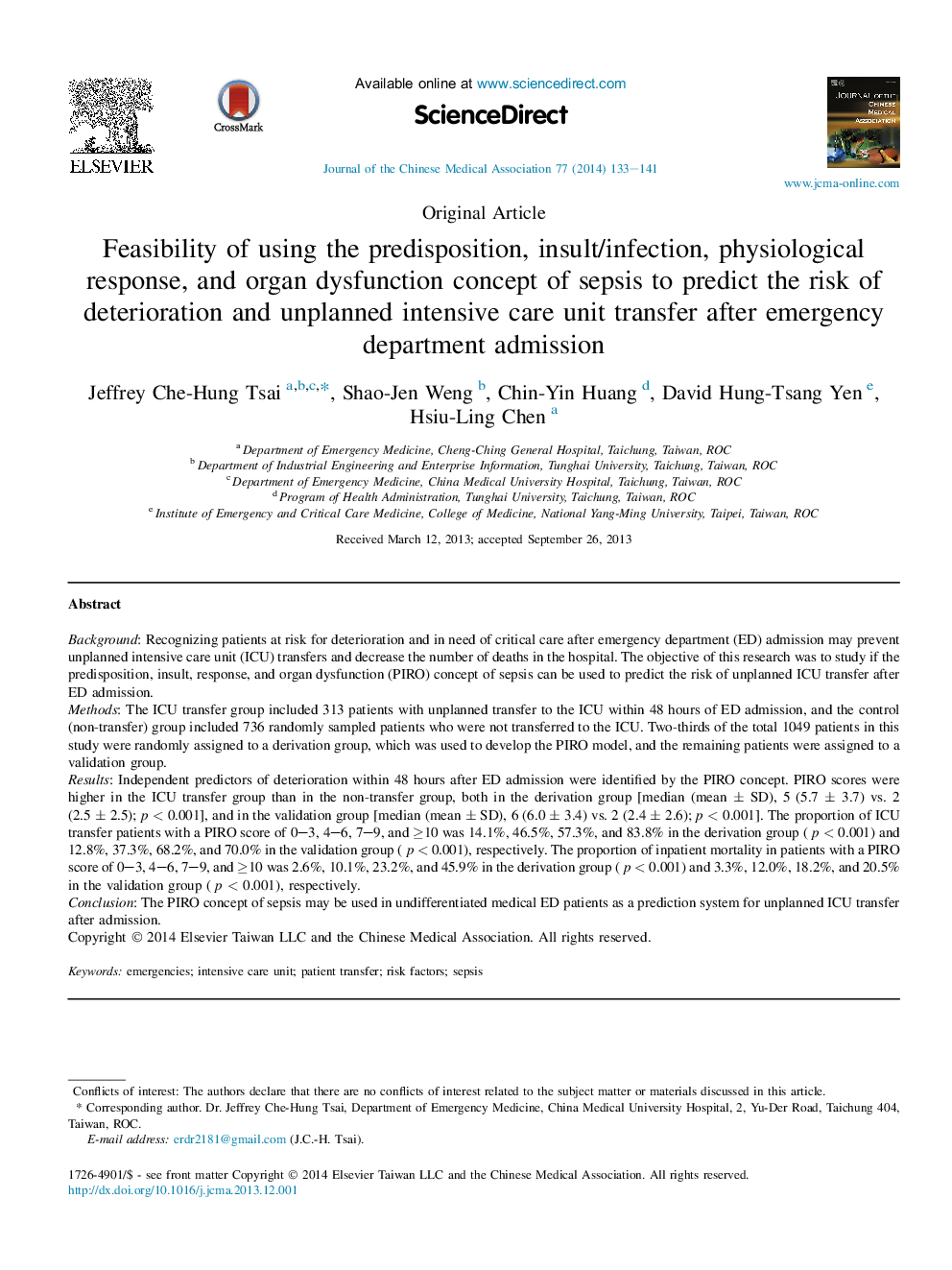| Article ID | Journal | Published Year | Pages | File Type |
|---|---|---|---|---|
| 3476495 | Journal of the Chinese Medical Association | 2014 | 9 Pages |
BackgroundRecognizing patients at risk for deterioration and in need of critical care after emergency department (ED) admission may prevent unplanned intensive care unit (ICU) transfers and decrease the number of deaths in the hospital. The objective of this research was to study if the predisposition, insult, response, and organ dysfunction (PIRO) concept of sepsis can be used to predict the risk of unplanned ICU transfer after ED admission.MethodsThe ICU transfer group included 313 patients with unplanned transfer to the ICU within 48 hours of ED admission, and the control (non-transfer) group included 736 randomly sampled patients who were not transferred to the ICU. Two-thirds of the total 1049 patients in this study were randomly assigned to a derivation group, which was used to develop the PIRO model, and the remaining patients were assigned to a validation group.ResultsIndependent predictors of deterioration within 48 hours after ED admission were identified by the PIRO concept. PIRO scores were higher in the ICU transfer group than in the non-transfer group, both in the derivation group [median (mean ± SD), 5 (5.7 ± 3.7) vs. 2 (2.5 ± 2.5); p < 0.001], and in the validation group [median (mean ± SD), 6 (6.0 ± 3.4) vs. 2 (2.4 ± 2.6); p < 0.001]. The proportion of ICU transfer patients with a PIRO score of 0–3, 4–6, 7–9, and ≥10 was 14.1%, 46.5%, 57.3%, and 83.8% in the derivation group (p < 0.001) and 12.8%, 37.3%, 68.2%, and 70.0% in the validation group (p < 0.001), respectively. The proportion of inpatient mortality in patients with a PIRO score of 0–3, 4–6, 7–9, and ≥10 was 2.6%, 10.1%, 23.2%, and 45.9% in the derivation group (p < 0.001) and 3.3%, 12.0%, 18.2%, and 20.5% in the validation group (p < 0.001), respectively.ConclusionThe PIRO concept of sepsis may be used in undifferentiated medical ED patients as a prediction system for unplanned ICU transfer after admission.
